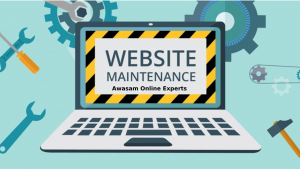How UX Writing Enhances the Overall User Experience
In the digital age, user experience (UX) is a key factor in determining the success of websites, apps, and digital products. While visual design and functionality are often emphasized, an equally crucial but sometimes overlooked aspect of UX is UX writing. UX writing refers to the creation of clear, concise, and user-friendly text within digital interfaces, such as buttons, menus, instructions, and error messages. This text, often called microcopy, plays a significant role in guiding users, improving usability, and enhancing the overall experience.
In this blog, we’ll explore how UX writing contributes to better user experiences and why it is essential for digital products.
What is UX Writing?
UX writing involves crafting content that helps users navigate and interact with digital interfaces smoothly. Unlike traditional writing, which may focus on storytelling or persuasion, UX writing prioritizes clarity, brevity, and user needs. The goal is to make interactions seamless, intuitive, and engaging.
Common examples of UX writing include:
- Button labels (e.g., “Submit” vs. “Send Message”)
- Error messages (e.g., “Invalid email. Please enter a valid email address.”)
- Onboarding instructions
- Tooltips and help text
- Form field placeholders
- Confirmation messages (e.g., “Your order has been placed successfully!”)
Good UX writing removes ambiguity and ensures that users don’t have to guess what to do next, reducing friction in their journey.

UX Writing
The Impact of UX Writing on User Experience
1. Clarity and Ease of Use
One of the primary objectives of UX writing is to provide users with clear and actionable information. A well-written interface eliminates confusion and reduces cognitive load, ensuring users can complete tasks quickly and efficiently.
For example, a vague button labeled “Continue” might leave users uncertain about what happens next. Instead, a more precise label like “Continue to Payment” gives clear guidance. This small change significantly enhances usability.
2. Enhancing User Trust and Confidence
Trust is a critical component of user experience. Poorly written or ambiguous messages can lead to frustration, making users question the reliability of a product. UX writing builds trust by providing accurate, friendly, and reassuring text.
Consider an error message. Instead of displaying a generic “Something went wrong,” a good UX writer will craft a helpful message like, “We couldn’t process your request. Please check your internet connection and try again.” This not only informs the user of the issue but also provides a possible solution.
3. Improving Accessibility
Accessibility is an important aspect of UX design, and UX writing plays a crucial role in ensuring that digital products are inclusive. Clear and concise language helps users with different backgrounds, reading abilities, and cognitive challenges understand and interact with digital interfaces effectively.
For example, overly complex words or jargon can alienate users. Instead of “Authentication failed due to incorrect credentials,” a more accessible version could be, “Wrong username or password. Please try again.”
4. Reducing User Frustration and Drop-Off Rates
Poor UX writing can lead to frustration, causing users to abandon a website or app altogether. For instance, an unclear checkout process or confusing form instructions can result in cart abandonment. Well-crafted microcopy ensures a smooth and frictionless user journey.
For example, instead of a confusing form field label like “Name,” a better version could be “Full Name (as it appears on your ID).” This provides clarity and prevents potential errors.
5. Encouraging User Engagement and Conversions
Effective UX writing isn’t just about avoiding frustration—it also drives engagement and conversions. Carefully crafted microcopy can persuade users to take action, whether it’s signing up for a newsletter, making a purchase, or completing a profile.
For instance, instead of a dull CTA (Call-to-Action) like “Sign Up,” a more compelling alternative could be “Join Our Community – It’s Free!” This makes the action more inviting and encourages user participation.
6. Creating a Consistent Brand Voice
UX writing is an extension of a brand’s voice and personality. A consistent and friendly tone makes interactions more enjoyable and relatable.
For example, Slack, a popular workplace communication tool, uses conversational and friendly UX writing. Instead of a dull loading screen message, Slack displays fun and encouraging messages like, “Hang tight! We’re getting things ready for you.” This keeps users engaged and entertained during wait times.

UX Writing
7. Guiding Users Through Complex Processes
Many digital products involve multi-step processes, such as signing up for an account, completing a checkout process, or onboarding a new user. UX writing helps guide users by breaking down complex processes into manageable steps with clear instructions.
For example, when setting up a new account, instead of saying, “Create an account,” a more helpful approach could be:
- “Enter your email”
- “Choose a strong password”
- “Confirm your details”
This structured approach makes the process feel simpler and less overwhelming.
8. Providing Instant Feedback and Assistance
UX writing helps users by providing real-time feedback. For instance, form validations help users correct errors before submitting a form.
Compare these two messages:
- Bad UX Writing: “Error. Try again.”
- Good UX Writing: “Oops! Your password must be at least 8 characters long and include one number.”
The second message tells users exactly what went wrong and how to fix it, reducing frustration and enhancing the experience.
9. Enhancing Mobile and Voice User Experience
With the rise of mobile and voice interfaces, UX writing has become even more crucial. Mobile screens have limited space, so concise and effective wording is essential.
Similarly, voice assistants like Siri and Alexa rely on well-structured UX writing to deliver a natural and intuitive conversational experience. A good UX writer ensures that voice commands and responses are clear and easy to understand.
Best Practices for Effective UX Writing
To maximize the impact of UX writing, consider the following best practices:
- Be Clear and Concise: Use simple language that eliminates ambiguity.
- Use Active Voice: Instead of “Your order has been placed,” use “We’ve placed your order!”
- Be User-Focused: Write from the user’s perspective and anticipate their needs.
- Maintain Consistency: Keep tone and terminology uniform across all touchpoints.
- Test and Iterate: Conduct A/B testing to see which microcopy works best.
- Make It Conversational: Write as if you’re guiding a friend through the process.
- Avoid Jargon: Use familiar words that users easily understand.

UX Writing
Conclusion
UX writing is a powerful tool that enhances the overall user experience by making digital interactions clear, engaging, and user-friendly. Whether guiding users through a complex process, reducing frustration, or building trust, effective UX writing ensures that every word on a digital interface serves a meaningful purpose.






